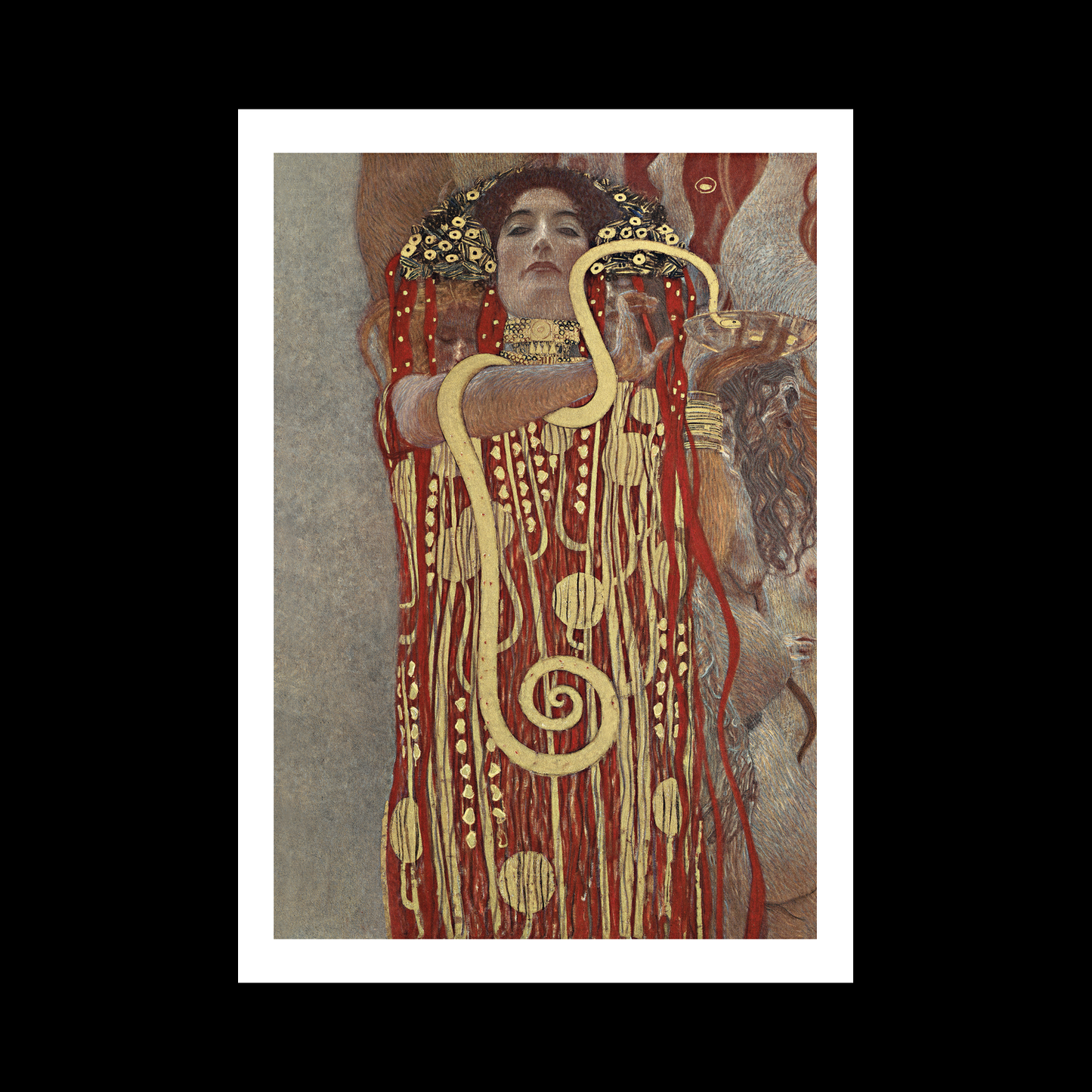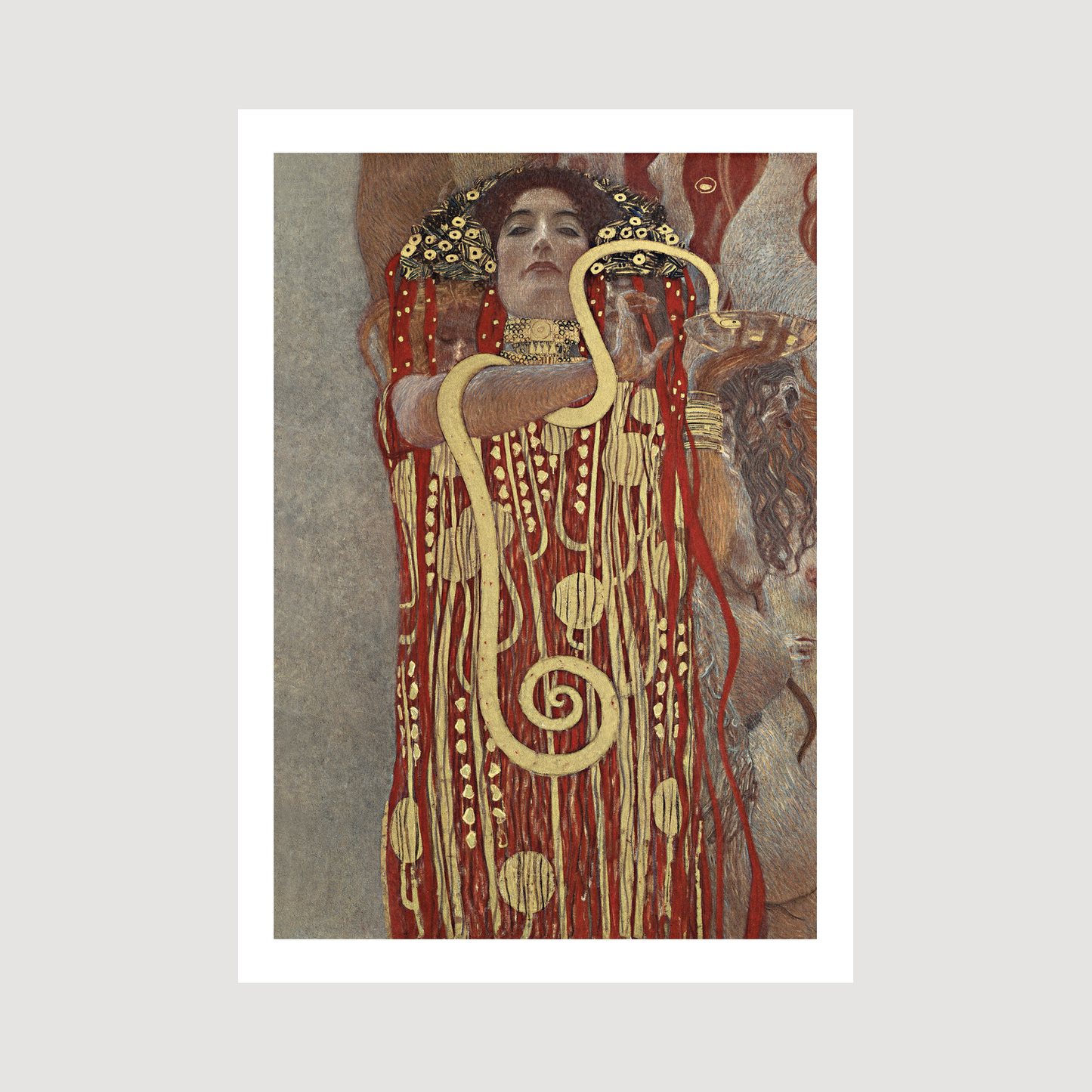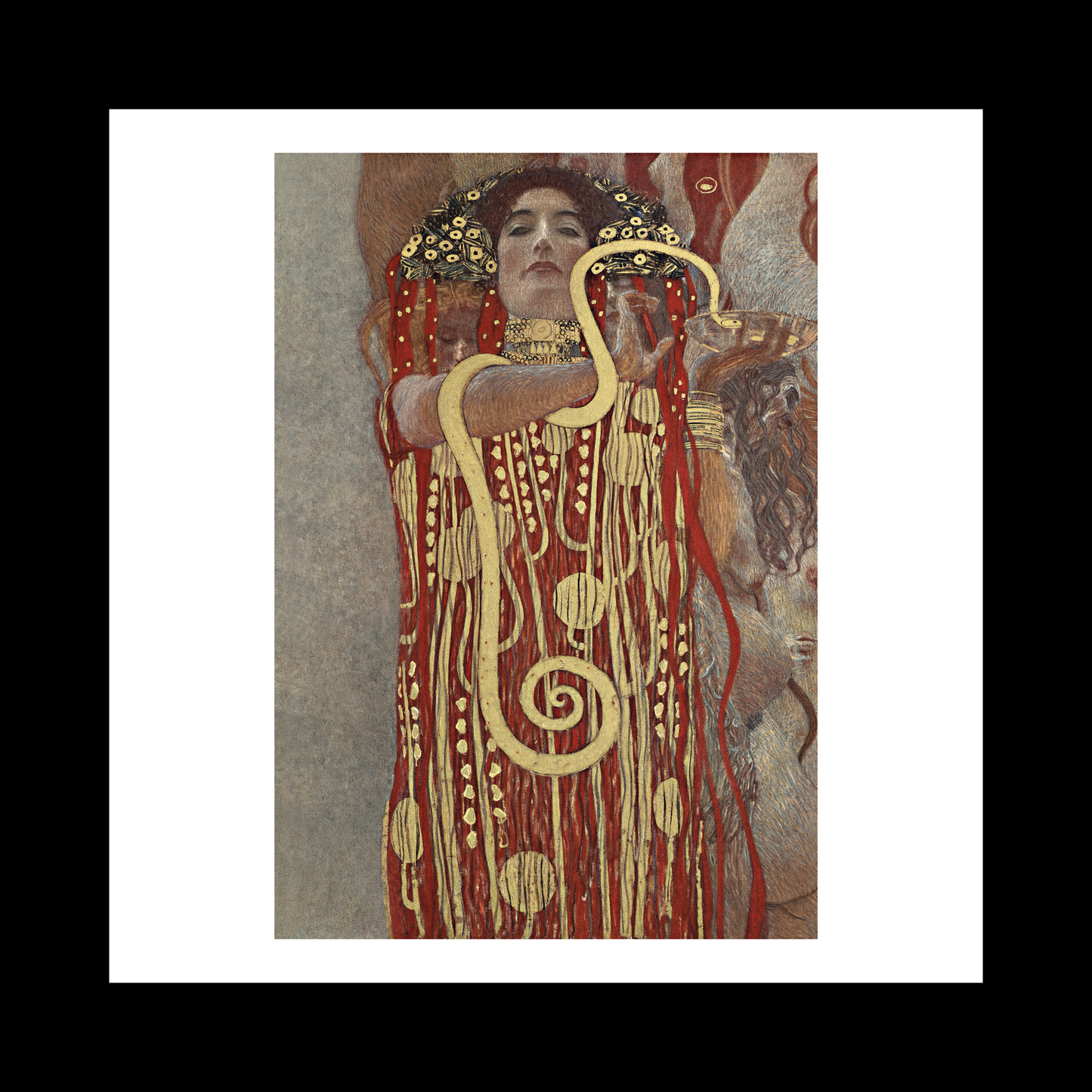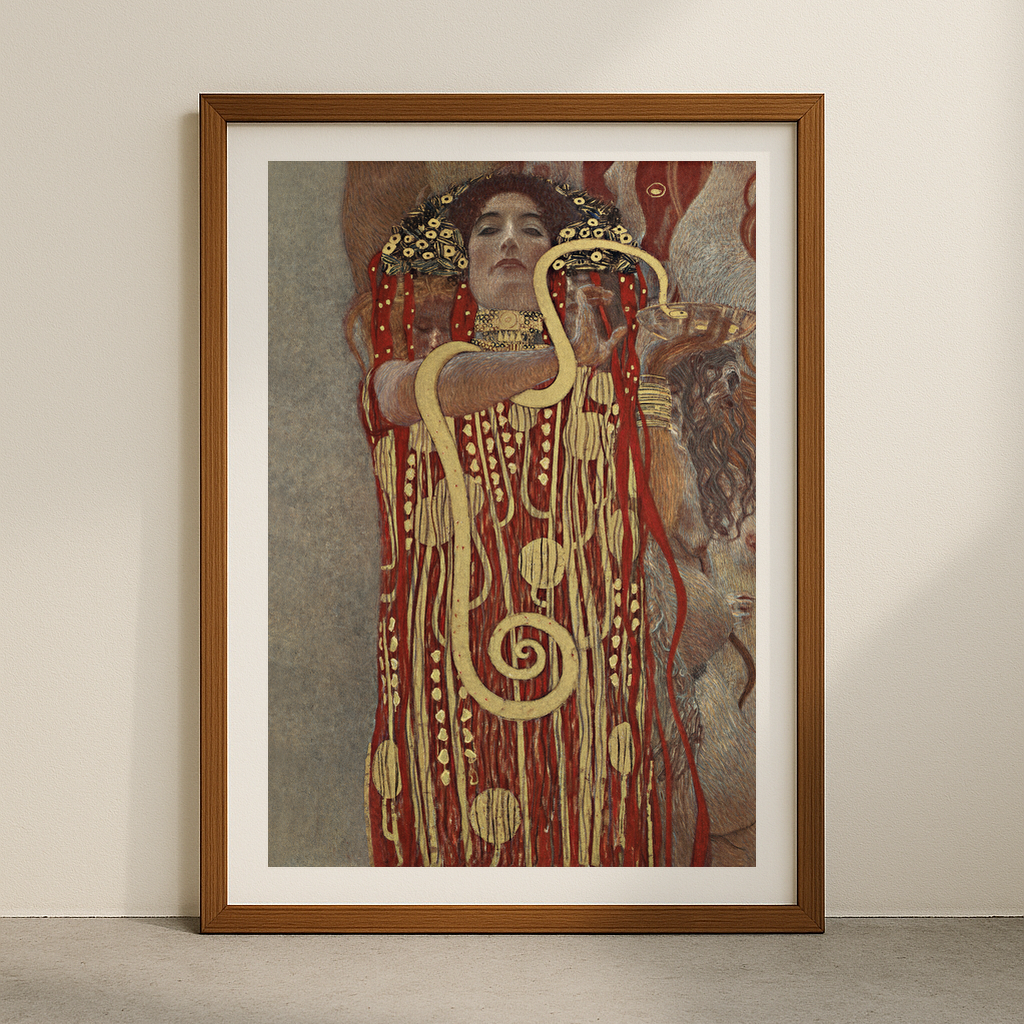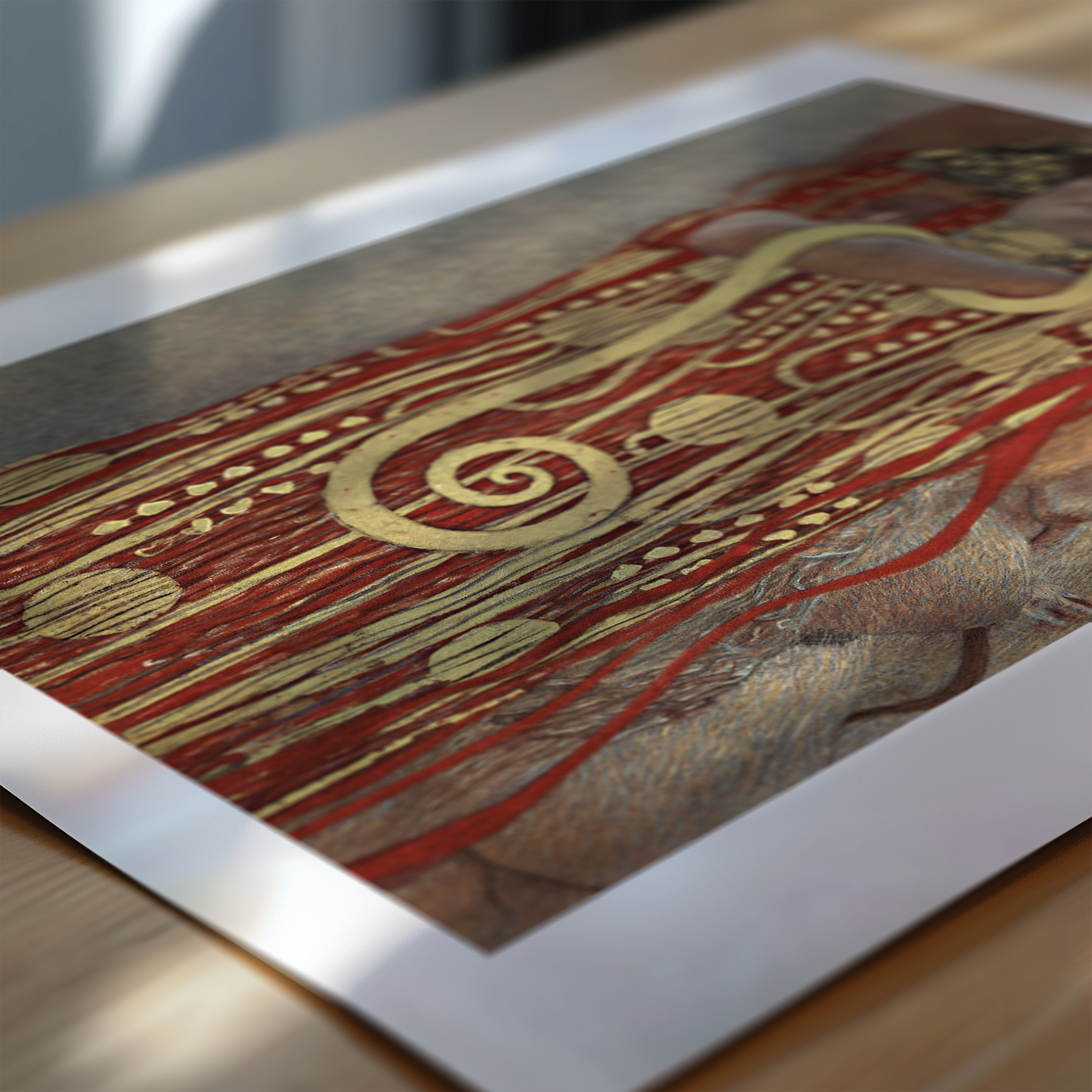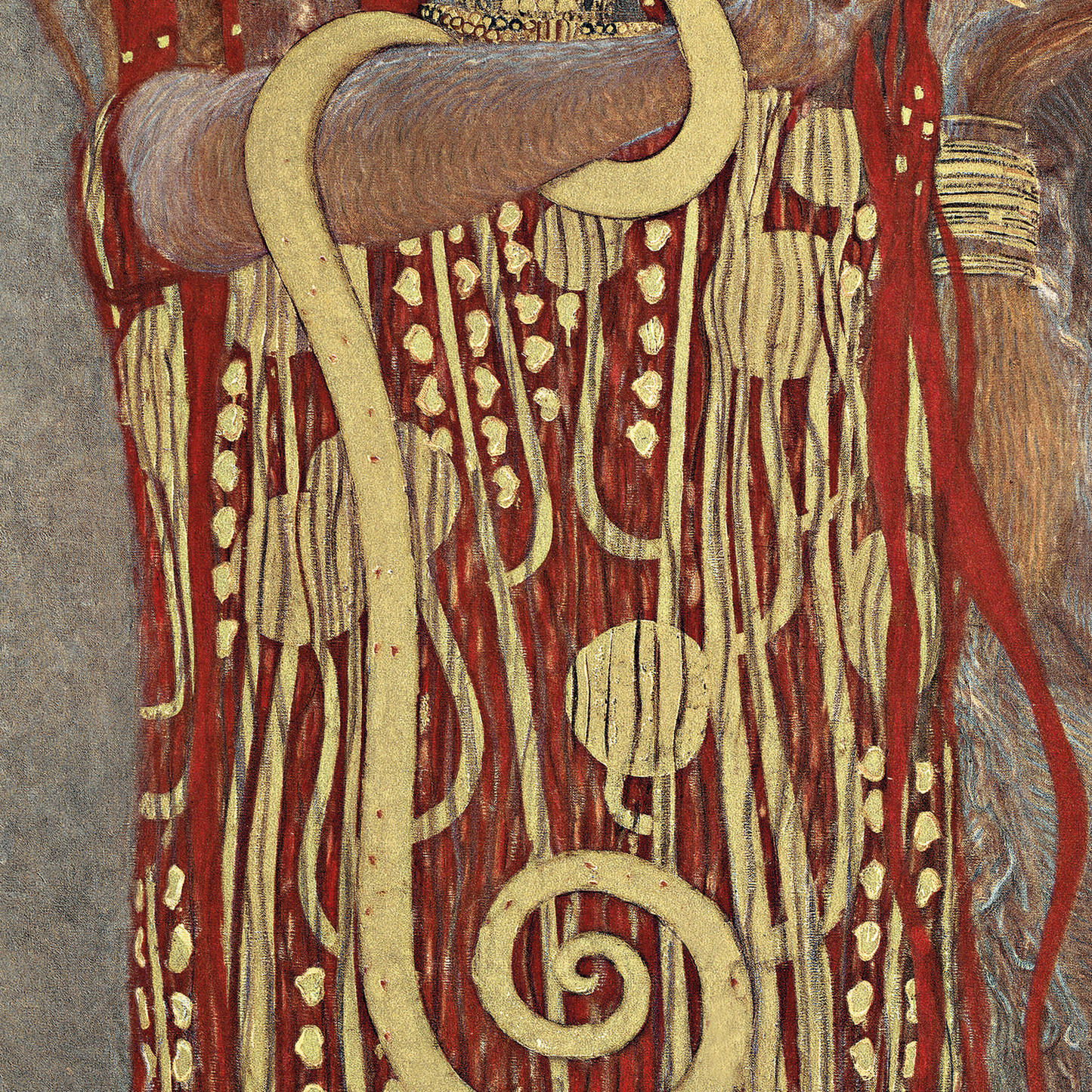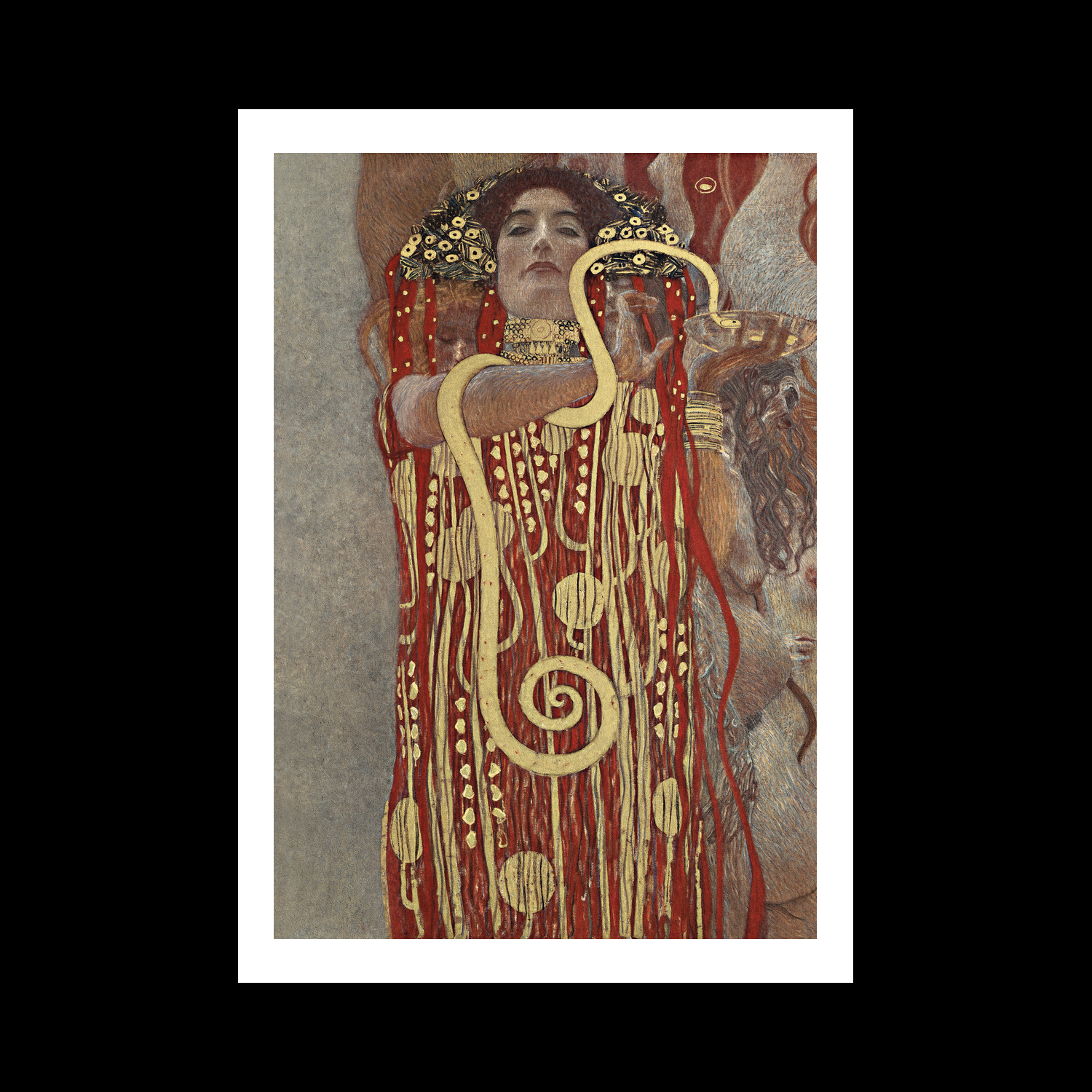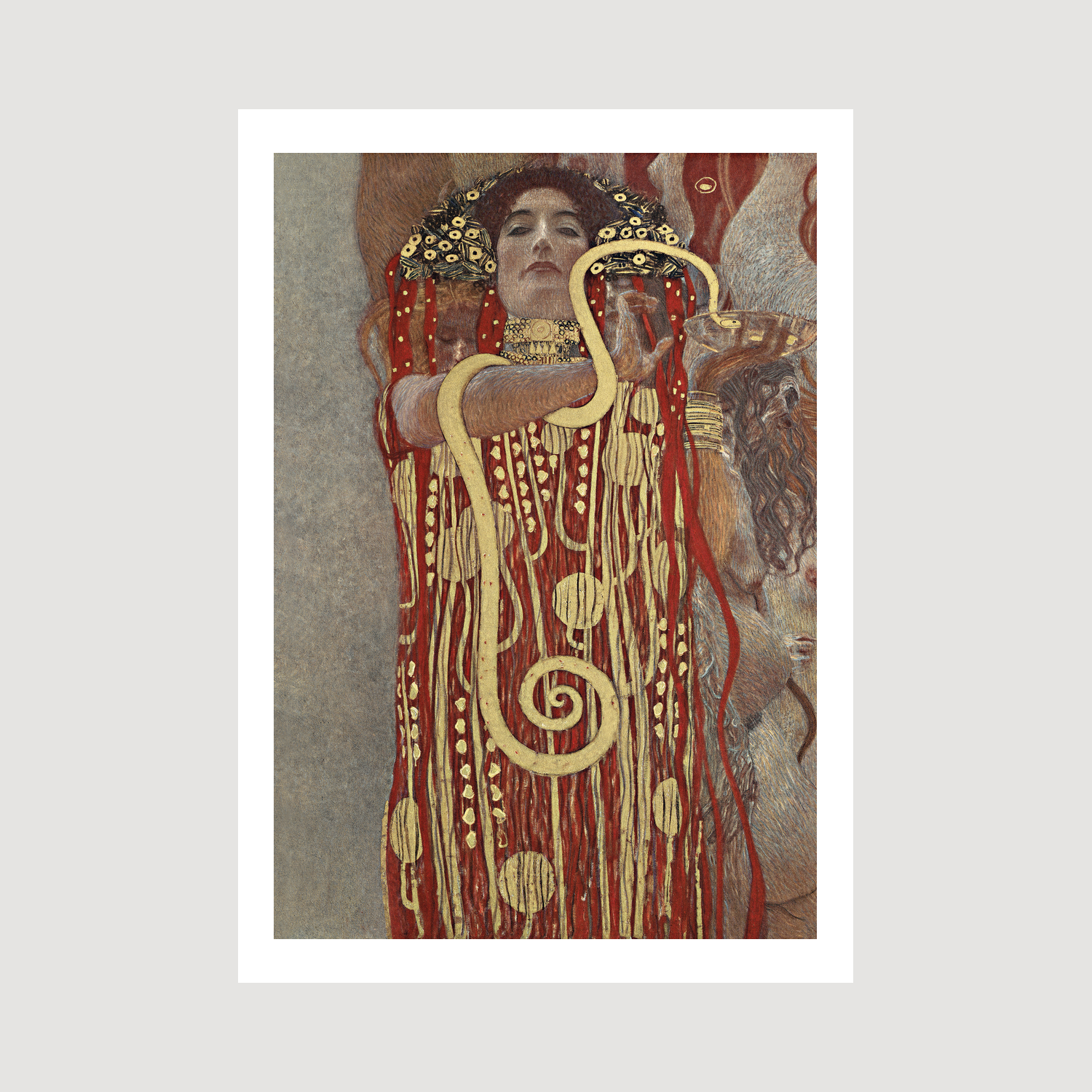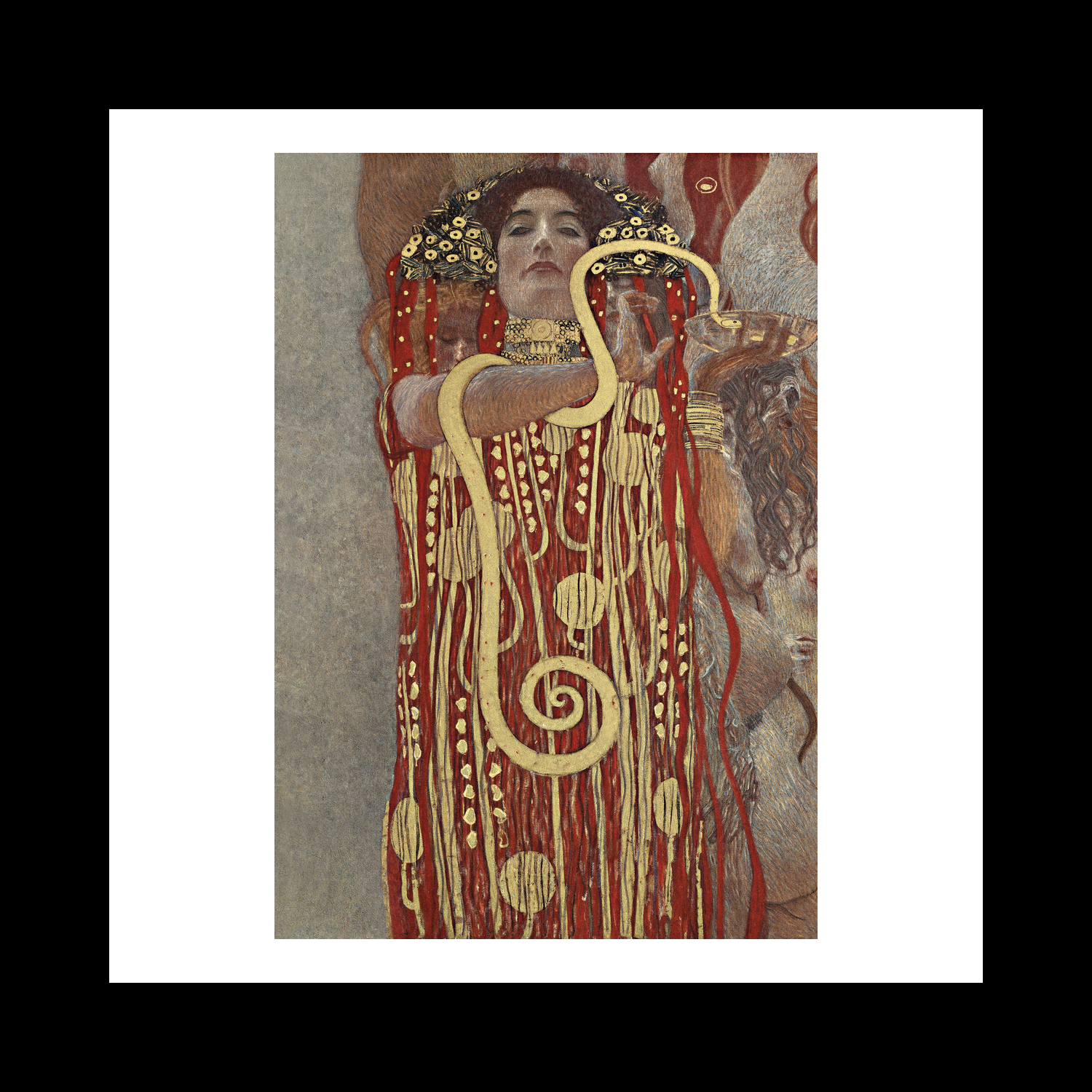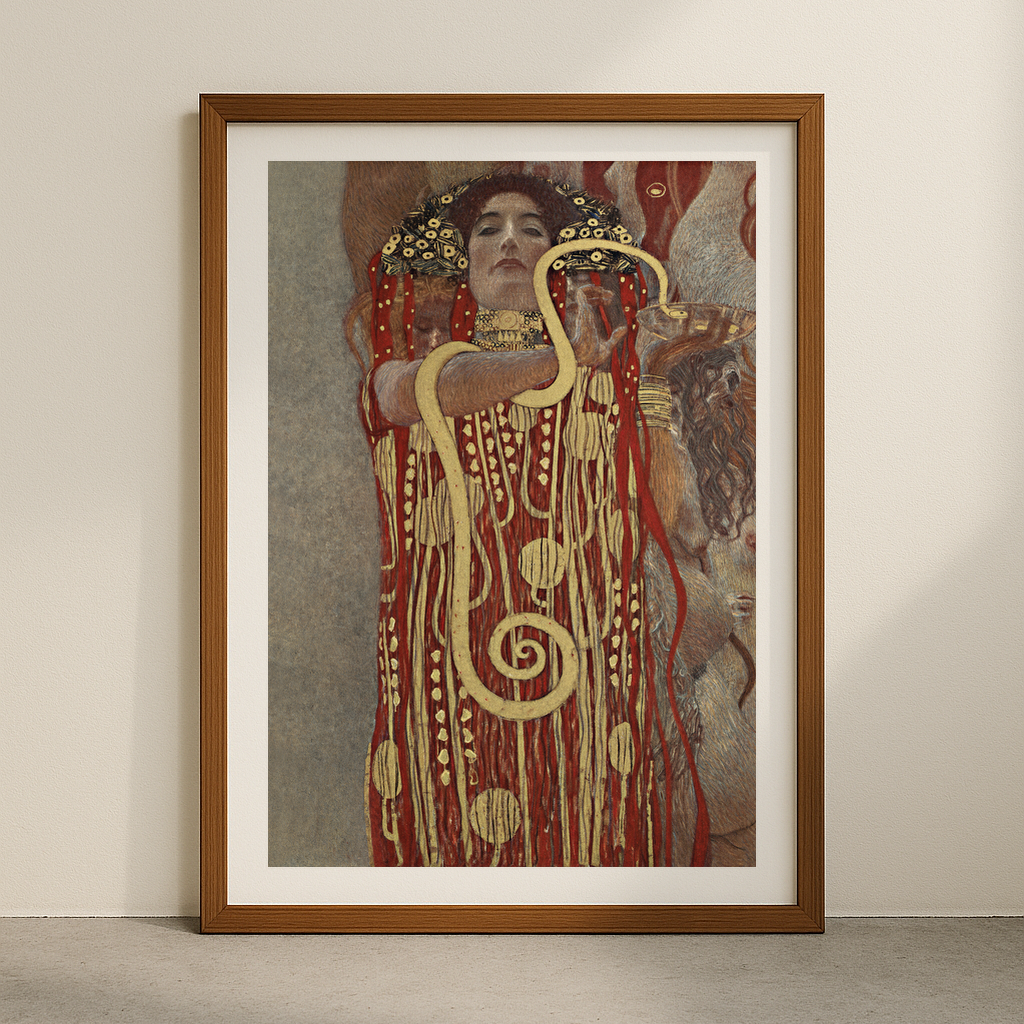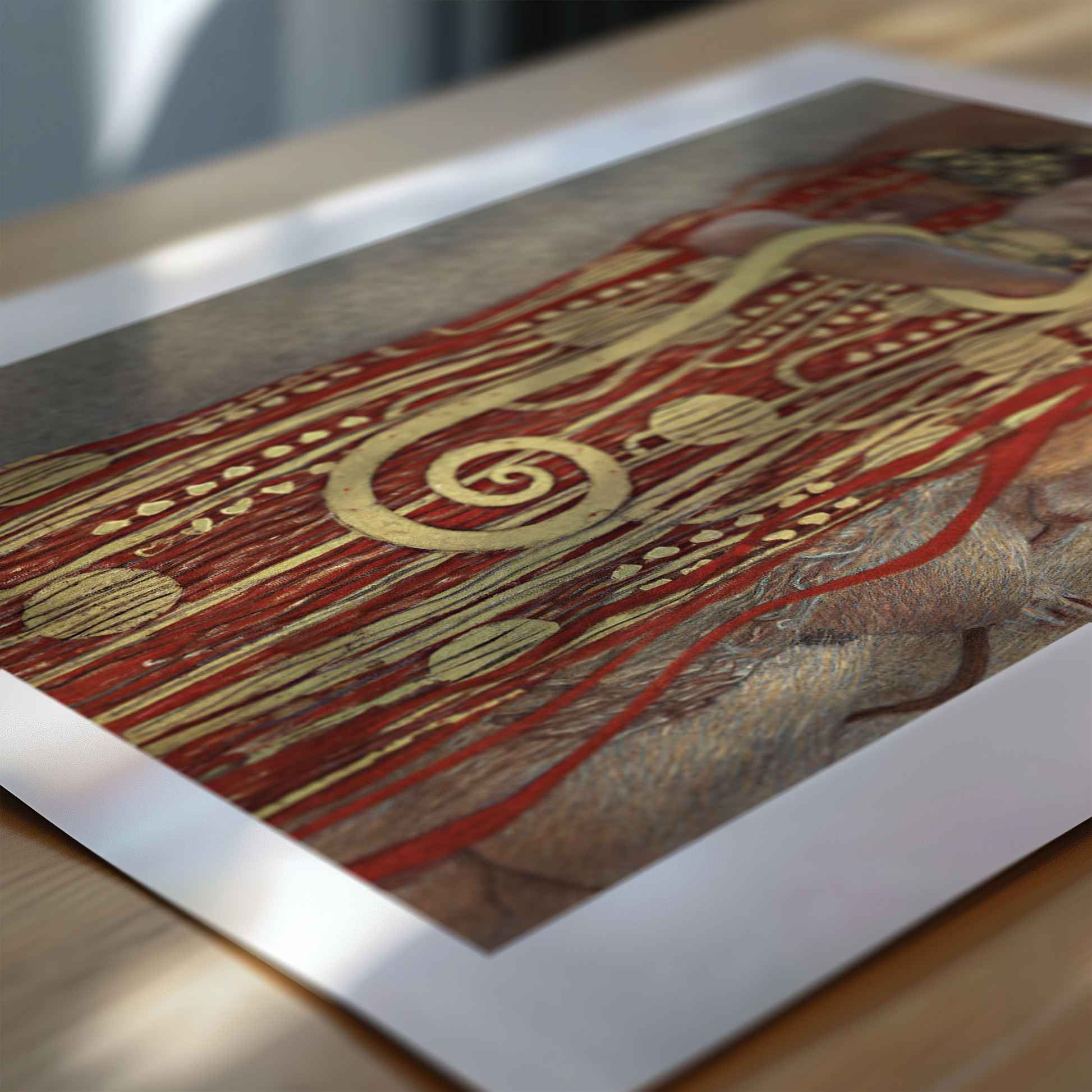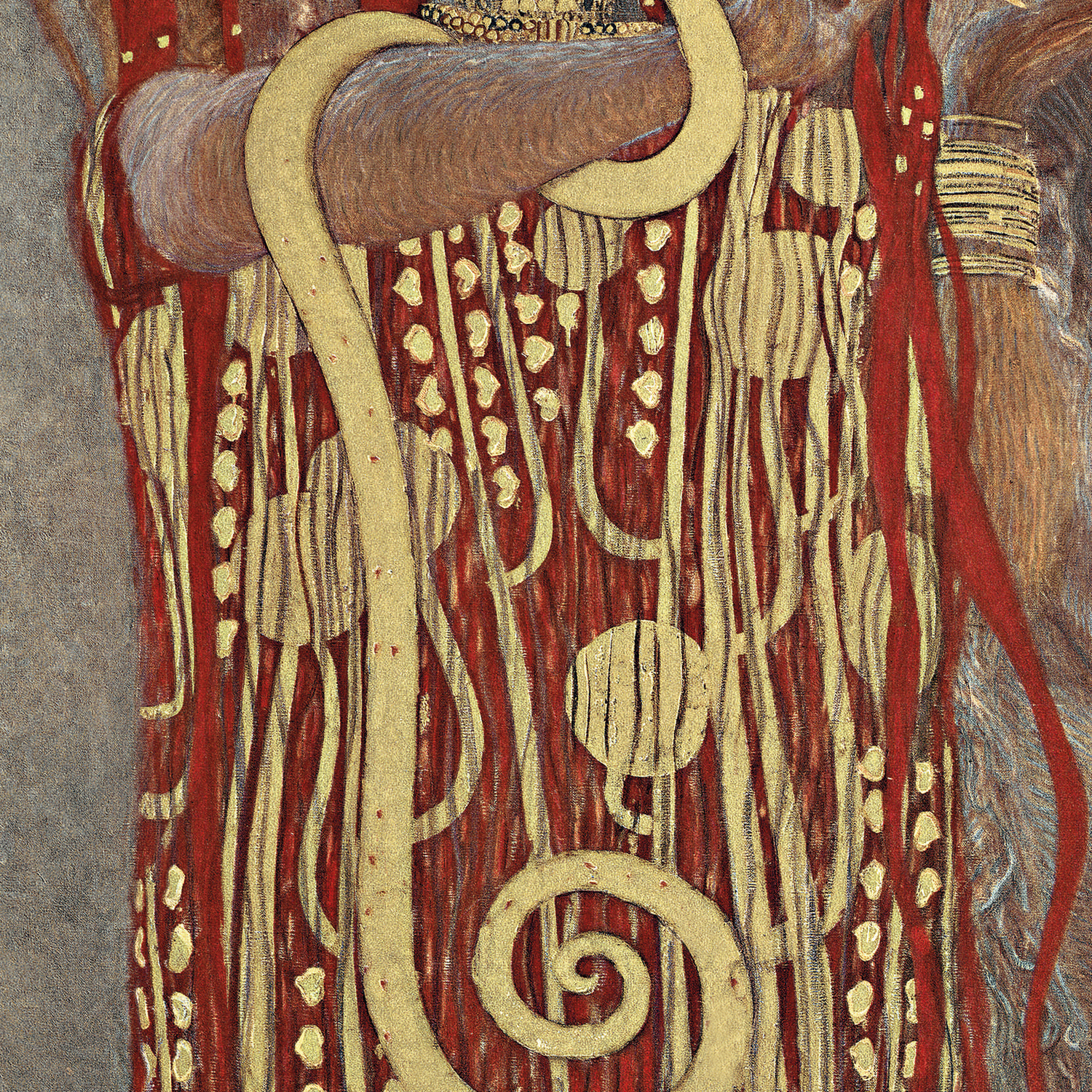1
/
of
6
Hygieia (1907)
Hygieia (1907)
Regular price
£12.45 GBP
Regular price
Sale price
£12.45 GBP
Taxes included.
Quantity
Couldn't load pickup availability
Hygieia (1907) by Gustav Klimt stands as one of the most enchanting examples of the Austrian artist's golden period, where he masterfully blended Art Nouveau's decorative elements with symbolic medicine-themed imagery. This particular work, part of the University of Vienna ceiling paintings, depicts Hygieia, the Greek goddess of health and hygiene, rendered in Klimt's distinctive ornamental style.
The painting showcases Klimt's characteristic use of gold leaf and intricate patterns, with Hygieia portrayed as a striking figure draped in rich, decorative robes. Her elongated form emerges from a sea of geometric patterns and swirling designs, while holding the Aesculapian snake and cup of Lethe, traditional symbols of medicine. The artist's meticulous attention to detail is evident in the mosaic-like background and the subtle interplay between realistic portraiture and decorative abstraction.
This work holds special significance as it was created during a pivotal time in Klimt's career when he was challenging academic conventions. The commission for the University of Vienna's ceiling paintings proved controversial, with critics denouncing his modern interpretation of classical themes. Interestingly, Klimt drew inspiration from Byzantine mosaics he had studied in Ravenna, Italy, incorporating their golden splendour into his unique visual language. The painting reflects the artist's fascination with the intersection of beauty, science, and mythology, themes that dominated his work during this period.
The artwork's creation coincided with Vienna's cultural golden age, when the city was experiencing remarkable developments in medicine, psychology, and the arts. Klimt's interpretation of Hygieia reflects this zeitgeist, combining traditional medical symbolism with the era's emerging modern sensibilities.
View full details
The painting showcases Klimt's characteristic use of gold leaf and intricate patterns, with Hygieia portrayed as a striking figure draped in rich, decorative robes. Her elongated form emerges from a sea of geometric patterns and swirling designs, while holding the Aesculapian snake and cup of Lethe, traditional symbols of medicine. The artist's meticulous attention to detail is evident in the mosaic-like background and the subtle interplay between realistic portraiture and decorative abstraction.
This work holds special significance as it was created during a pivotal time in Klimt's career when he was challenging academic conventions. The commission for the University of Vienna's ceiling paintings proved controversial, with critics denouncing his modern interpretation of classical themes. Interestingly, Klimt drew inspiration from Byzantine mosaics he had studied in Ravenna, Italy, incorporating their golden splendour into his unique visual language. The painting reflects the artist's fascination with the intersection of beauty, science, and mythology, themes that dominated his work during this period.
The artwork's creation coincided with Vienna's cultural golden age, when the city was experiencing remarkable developments in medicine, psychology, and the arts. Klimt's interpretation of Hygieia reflects this zeitgeist, combining traditional medical symbolism with the era's emerging modern sensibilities.
